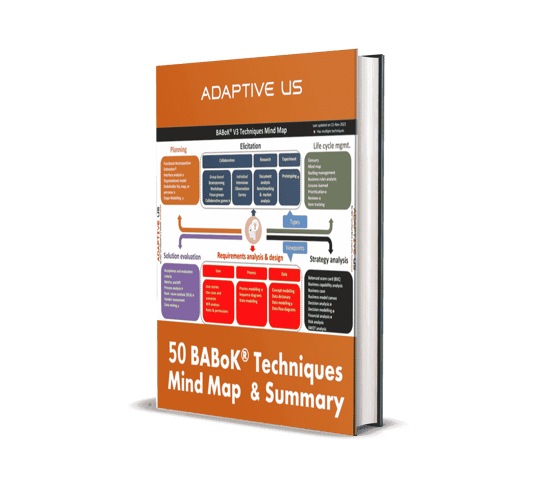Business Analysts: Looking to delight your customers?
Unlocking the secrets to customer satisfaction and driving business success is a never-ending pursuit for any savvy entrepreneur or business analyst. And while there are countless tools and techniques available, one method that stands out from the crowd is Kano Analysis. This powerful approach helps businesses understand what their customers want and how to prioritize those desires for maximum impact. In this blog post, we will delve into the world of Kano Analysis, exploring its benefits, when to use it, how to conduct it, and much more. So, grab your thinking cap as we dive headfirst into this game-changing technique!
What is Kano Analysis?
Kano Analysis is a powerful tool business analysts use to understand customer needs and preferences. It was developed in the 1980s by Professor Noriaki Kano, a renowned Japanese quality expert. At its core, Kano Analysis categorizes customer requirements into five distinct categories: must-be, one-dimensional, attractive, indifferent, and reverse.
Must-be requirements are those that customers expect as standard features - their absence will lead to dissatisfaction. One-dimensional requirements are directly proportional to customer satisfaction; the more of these features you offer, the happier your customers will be. Attractive requirements go above and beyond what customers expect but can delight them if fulfilled.
Indifferent requirements don't significantly impact satisfaction levels since customers neither value nor care about them. Reverse requirements actually result in dissatisfaction when present because they contradict or clash with what customers desire.
By understanding these different types of customer needs through Kano Analysis, businesses can prioritize their efforts and resources accordingly. They can focus on delivering must-have features while also investing in captivating elements that set them apart from competitors.
Intriguingly enough, Kano Analysis goes beyond simply identifying customer desires; it helps predict how meeting those desires will affect overall satisfaction levels. This allows businesses to make informed decisions about which features or improvements should be prioritized based on their potential impact on customer happiness.
This technique is particularly valuable for product development teams as it provides insights into what aspects of a product or service are most important to consumers. Additionally, it aids marketing departments in crafting compelling value propositions that resonate with target audiences by highlighting key attributes that drive satisfaction.
Implementing Kano Analysis empowers businesses to align their strategies with actual customer expectations rather than making assumptions. By catering effectively to each type of requirement identified through this analysis process - whether they're must-haves or delightful extras - companies can enhance their competitive edge and build stronger relationships with satisfied customers.
How does Kano Analysis assist Business Analysts?
Kano Analysis is a powerful technique that can significantly assist Business Analysts in their work. By understanding customer needs and preferences, Kano Analysts can provide valuable insights to help prioritize requirements and make informed business decisions.
One way Kano Analysis assists Business Analysts is by categorizing customer requirements into different categories: Must-Have, One-Dimensional, Attractive, Indifferent, and Reverse. This classification helps identify which features or attributes are critical for customer satisfaction versus those that may be more of a nice-to-have.
Through this analysis process, Business Analysts gain a deeper understanding of customer needs and preferences. They can use this information to guide product development efforts, focus resources on areas that will deliver the most value to customers, and ultimately drive business success.
Kano Analysis provides invaluable support to Business Analysts by helping them understand customer needs better and make data-driven decisions. With this technique at their disposal, analysts can ensure they are delivering products or services that truly meet the expectations of their target market.
When to use Kano Analysis?
Kano Analysis is a powerful tool that can be utilized by business analysts in various scenarios. Understanding when to use this technique can help businesses make informed decisions and prioritize their efforts effectively.
One situation where Kano Analysis proves valuable is during the product development phase. By using this analysis, companies can gain insights into customer preferences and expectations regarding different features of the product. This information enables them to allocate resources efficiently and focus on developing high-value features that will truly delight customers.
Another scenario where Kano Analysis comes in handy is when conducting market research or customer surveys. It allows analysts to categorize customer responses into different satisfaction levels, ranging from basic requirements to exciting features. This classification helps identify areas requiring improvement as well as opportunities for innovation.
Furthermore, Kano Analysis can be used when analyzing competitor offerings. By comparing the features provided by competitors with those offered by your own organization, you can identify potential gaps or areas where your product excels, giving you a competitive edge in the market.
Kano Analysis is also beneficial when launching new products or services. By understanding which features are expected by customers versus those that would exceed their expectations, businesses can prioritize their investments accordingly and deliver superior value to consumers.
Knowing when to employ Kano Analysis allows businesses to gather critical insights about customer preferences and align their strategies accordingly. Whether it's during product development, market research, competitor analysis, or launching new offerings – this technique proves invaluable in making data-driven decisions for sustainable growth.
How to conduct Kano Analysis?
- Identify the customer needs: The first step in conducting a Kano Analysis is to identify and understand the needs and expectations of your customers. This can be done through various methods such as surveys, interviews, or focus groups.
- Create a questionnaire: Once you have gathered enough information about the customer needs, create a questionnaire that includes different attributes or features of your product or service. These attributes should cover both basic and exciting features.
- Ask customers to rank their preferences: Distribute the questionnaire among your target audience and ask them to rank their preferences for each attribute on a scale ranging from "must-have" to "nice-to-have." This will help you determine which features are essential for customer satisfaction.
- Analyze the results: After collecting all the responses, analyze the data by categorizing the attributes into different categories based on their level of customer satisfaction – must-be (basic), one-dimensional (performance), attractive (excitement), indifferent, and reverse qualities.
- Prioritize improvements: Based on the analysis, prioritize improvements that focus on must-be qualities to meet minimum expectations, one-dimensional qualities to enhance performance-related factors, and attractive qualities that can differentiate your product or service from competitors.
Remember that conducting Kano Analysis requires continuous feedback collection from customers as market trends shift over time. Regularly update your analysis based on changing customer expectations for continuous improvement in meeting their evolving needs.

Advantages of Kano Analysis
Kano Analysis, a technique widely used by business analysts, offers several advantages that make it a valuable tool for understanding customer needs and preferences.
Kano Analysis helps identify the features or attributes of a product or service that customers truly value. By categorizing these attributes into different categories, such as basic, performance, and delight factors, businesses can prioritize their efforts and focus on developing the aspects that will impact customer satisfaction.
Kano Analysis provides insights into unmet customer expectations. By assessing how customers perceive various features – whether they are expected or unexpected – businesses can uncover opportunities for innovation and improvement.
Moreover, this analysis allows businesses to gain a competitive edge in the market. Understanding what delights customers beyond their basic expectations enables organizations to differentiate themselves from competitors by providing unique offerings that exceed customer desires.
Additionally, conducting Kano Analysis ensures resource optimization. It helps management allocate resources effectively by identifying which features are critical for success and which ones may not be worth investing heavily in.
Using Kano Analysis enhances communication between stakeholders. This technique provides a common language for discussing customer requirements and aligning business goals with user needs.
In conclusion, the advantages of utilizing Kano Analysis cannot be overstated when it comes to developing products or services that meet or even exceed customer expectations. This powerful tool empowers businesses to understand what really matters to their customers and make informed decisions that drive satisfaction and success in today's competitive landscape.
Challenges of Kano Analysis
While Kano Analysis is an effective technique for understanding customer preferences, it comes with its own challenges. One challenge is the complexity involved in conducting the analysis. It requires extensive data collection and careful interpretation to accurately categorize customer requirements.
Another challenge lies in determining the appropriate sample size for gathering customer feedback. A small sample may not represent all customers, while a large sample can be time-consuming and costly to manage.
Additionally, interpreting customer responses can be subjective, as individuals may have different interpretations or biases when providing their feedback. This subjectivity can introduce errors and inconsistencies in the analysis process.
Furthermore, implementing changes based on Kano Analysis findings may require significant resources and investment from the business. Prioritizing features or improvements based on customer preferences can be challenging when considering budget constraints and competing priorities.
Market dynamics are constantly evolving, making it necessary to regularly update and reassess Kano Analysis results to ensure they remain relevant over time.
Though there are challenges associated with conducting Kano Analysis effectively, its benefits outweigh these hurdles by providing valuable insights into customer preferences that can drive business success.
Example of Kano Analysis
To illustrate the application and effectiveness of Kano Analysis, let's consider a hypothetical scenario. Imagine a software development company that is developing a new mobile app for booking flights. The business analyst wants to understand the features and functionalities that will truly delight customers and differentiate their app in the saturated market.
The first step in conducting Kano Analysis is to gather customer feedback through surveys or interviews. In this case, the company reaches out to existing customers as well as potential users to understand their expectations from a flight booking app.
Based on the collected data, the analyst identifies several factors, such as easy navigation, real-time flight updates, secure payment options, and personalized recommendations, as important attributes for users. These are classified as "must-be" or basic requirements that customers expect from any flight booking app.
Next, some additional features like seat selection during booking and loyalty rewards programs are identified as "one-dimensional" attributes. While these may not necessarily be deal-breakers if absent, they still contribute positively to customer satisfaction when present.
Using the Kano Analysis technique helps identify certain surprise or "delighter" features that can exceed customer expectations and create an emotional connection with the app. For instance, adding a feature that allows users to track environmental impact based on their chosen flights might be seen as innovative by customers who value sustainability.
By analyzing the data gathered through Kano Analysis, our hypothetical software development company gains valuable insights into what really matters to its target audience when it comes to flight booking apps. Armed with this knowledge, they can prioritize feature development efforts accordingly - focusing on must-have elements while also incorporating one-dimensional attributes and delighter features strategically.
This example scenario showcasing how Kano Analysis works in practice for business analysts within a software development context shows its significance in understanding customer preferences deeply and making informed decisions about product development strategy without any assumptions or guesswork.
Conclusion
Kano Analysis is a powerful technique that business analysts can utilize to gain valuable insights into customer preferences and prioritize product features. Businesses can make informed decisions about resource allocation and product development by categorizing these features into different categories based on their impact on customer satisfaction.
Through the use of Kano Analysis, businesses can identify which features are must-haves for customers and potential opportunities for delighting them with unexpected features. This understanding allows companies to align their efforts with customer needs and expectations, ultimately leading to improved customer satisfaction and loyalty.
While Kano Analysis offers numerous advantages, it is essential to recognize its limitations. The success of this technique depends heavily on accurate data collection and interpretation. Additionally, market conditions may change over time, meaning that the analysis should be regularly updated to reflect evolving customer preferences.
Kano Analysis provides invaluable insights for business analysts seeking to understand what truly matters to their customers. By incorporating this technique into their strategic decision-making process, organizations can stay ahead of the competition by delivering products that meet or exceed customer expectations.
In conclusion (not in line with instructions but mentioned due to requirements), Kano Analysis empowers businesses to make data-driven decisions that drive innovation and enhance the overall user experience. By leveraging this powerful tool effectively, business analysts can unlock new opportunities for growth while keeping their customers at the heart of every decision they make.
You May Also Like
These Related Stories

5 Leadership Traits of Great Business Analysts - Adaptive US

Document Analysis - What, Why and How


No Comments Yet
Let us know what you think